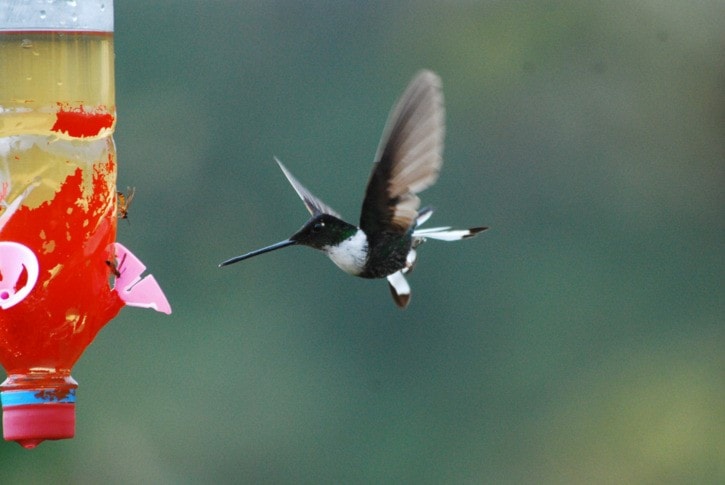We are now ten days into our trip in northern Peru. Our bus took us from Cajamarca on the west slope of the Andes to Tarapoto in the Amazon Basin on the eastern side of the Andes.
The drive up and over was amazing. Living in B.C. I thought I knew about mountain roads and switchbacks, but I have seen nothing to compare with the trip we’ve just made! These mountains are massive, and it’s necessary to go up and down several times before you get across.
One of our climbs took us from a river valley at 800 metres up to a pass at 3,600 metres, an elevation gain of 2,800 metres (almost 12,000 feet), in one steady climb. The trip covered 60 kilometres of gravel road, but there were so many severe switchback that we were actually only 20 kilometres from where we began!
Needless to say, we are seeing lots of birds. In the first ten days I have seen over 250 species that I have never seen before.
Some of the bird families here are familiar; they have warblers, flycatchers, hummingbirds, swallows, and tanagers. But some of the other families are quite unfamiliar. We have seen various sorts of chat-tyrants, tit-spinetails, flowerpiercers, pygmy-tyrants, shrike-tyrants, brush-tyrants, canasteros, ant-shrikes, ant-wrens, ant-pittas, and the list goes on!
Even the hummingbirds have a variety of names; some are called hermits, metaltails, sapphires, sabrewings, pufflegs, sylphs, trainbearers, woodstars, fairys, coquettes and Incas. The photo I have used here is a Collared Inca.
The hummingbird family is very large in South America. In B.C. we have four regularly occurring species, in Peru alone they have over 120 species. You can imagine the challenge it is for us to try and sort them all out, so far we have seen just 36 species and already I’m confused!
Another large family is the tanagers. B.C. has just one, Peru has 115; we’ve managed to see over 40 of them.
Photography is difficult here. If you’re in the forest, it is very thick and the light levels are very low. If you’re not in the forest then the equatorial sun is very bright and the light levels are too intense. And so many of the birds either like to skulk in the bushes or retreat to the canopy to feed.
It’s a great trip. Our guide Eduardo, has shown unimaginable patience with the group from Canada that seem to have to ask him the same questions over and over again.
One of the more common birds here is the Palm Tanager. Despite this, I don’t think a day goes by when somebody doesn’t ask Eduardo what’s that one there?
The Andes were magnificent. Tomorrow we fly from Tarapoto to Iquitos, on the banks of the Amazon River. From there we will travel by river; there are no roads leading to Iquitos. The river is the highway!
